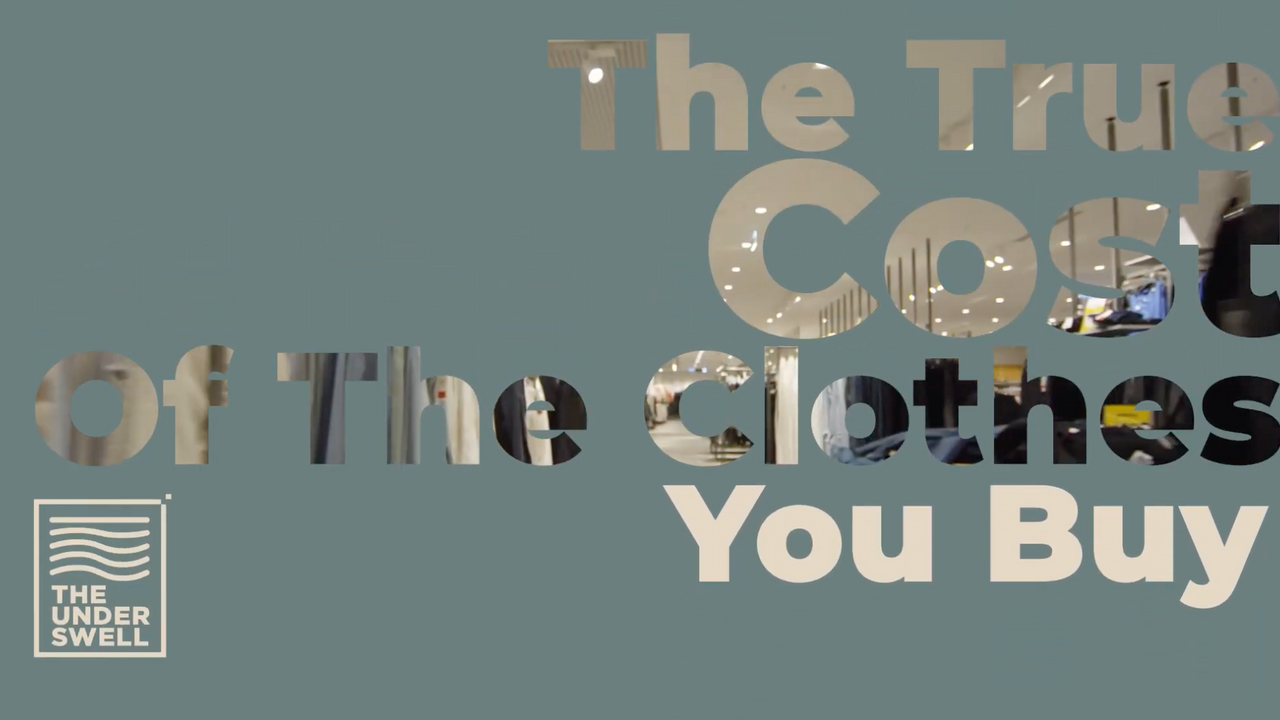True Cost of The Clothes We Buy
Oct 04, 2022
Clothing can be a great way to express oneself and may be an amazing creative outlet, but have you ever considered the true cost of the clothes in your closet?
We’re not talking about how much money you may have spent on a piece of clothing or even what’s in a typical cost sheet, but what are the impacts associated with making a piece of clothing? And, why do they matter?
Before we get into it, we have a YouTube video on this same topic if you prefer to listen and watch. Don’t forget to leave a comment with your thoughts and questions!
Where did the concept of true cost come from? First, we have to look back at the old way of doing business - the linear economy. Here in the States and after WWII, our economy ramped up and more Americans could afford more non-essentials. We really saw a spark in fashion consumption during this period, but we didn’t have a good mechanism for end of life.
So, instead, we relied on the liner business model: Take, Make, Use, Waste (i.e Dispose!)
Sounds simple enough, but in today’s economy, it’s archaic at best. With all the innovation we’ve had in the last 70ish years, we should have better mechanisms to manage the flow of waste - or better yet, design waste out.

You’ve probably heard talk about the circular economy or circularity (if you haven’t, check out the Ellen MacArthur Foundation) but it has yet to be adopted on a large scale. You could make the argument that participating in recommerce is a great way to contribute to the circular economy, and you’d be right, but we need to expand beyond the secondhand market too.
Another outdated business model we’ve relied on for too long is the bottom line. The focus on profit has left little room for other considerations - most importantly, environmental and social impacts.
The bottom line approach looks at a traditional cost sheet, which normally includes the cost of materials, labor, transportation, and other factors, and finds ways to keep those costs as low as possible and keep profits high. We’re not against having a profitable business (we all have to make a living!), in fact, it’s a crucial component of The Triple Bottom Line, but we have an issue with businesses who choose to turn a blind eye to the impacts their business has on people and the planet. Apparently, so too does the Business Roundtable, a group of more than 150 CEOS, who in 2019 changed their “purpose of a corporation” to be one that serves and benefits all stakeholders, not just shareholders. Check it out here.
The typical cost sheet doesn’t include externalized impacts like emissions, water pollution, and waste, but if we could factor those into a cost sheet, we would have a better understanding of the impacts associated with clothing production. We use the phrase “internalizing our externalities” to describe this process, but it can be difficult to achieve.
To give brands the benefit of the doubt, there has been a lack of technology available to help them measure their impacts accurately, but that isn’t an excuse to continue business as usual.
So, what can we do? First things first, all stakeholders need to take accountability. Often, we see people passing responsibility from consumers to brands to government. Truth is, we all play a part and we all have to do what we can, within our means, to be part of the solution. We’re not doing ourselves any favors by throwing our hands in the air and avoiding tackling the issue.

For the brands, we encourage you to tackle traceability & transparency, transition to preferred materials, manufacture with clean, renewable energy, and get your products certified! We know it takes time in money, but it’s a worthy investment.
For consumers, consider buying secondhand, only buy what you need, and if you have to buy new, find brands who are dedicated to creating a better business. If you need help finding these brands, check out our YouTube channel and other blog posts to see the brands we’re loving. Plus, don’t forget to vote! If you’re in the U.S., midterm elections are coming up, so make sure your voice is heard - who you elect will have the power to shape the future! You can register here if you aren’t already a voter.
Thanks for joining me for another sustainability session and I hope this helped shed a little more light on the sustainable apparel movement. Did you walk away with any questions? Are you fired up to be part of the movement?
Don’t forget to sign up for our weekly newsletter and share this post with a friend - we love making new connections!
Do you have any sustainability questions you want answered? Email us at [email protected] and we may mention your suggestion in the blog.
See you soon!
McKenzie
#keeplearning #truecost #sustainablefashion
